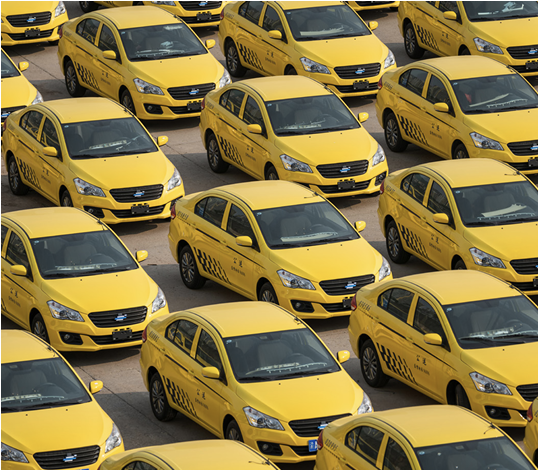
- News & Analysis
- Home
- Global Corporate Venturing
- Global University Venturing
- Latest News
- Publications
- Podcast
- The CVC Funding Round Database
- The CVC Directory
- Video
- Subscribe
- Newsletters
- Events
ContentsFeature: Battery makers in battle over costs and raw materialsData: DashboardViews: Investor and startup perspectiveStartups to watch: 12 early-stage companies to put on your radarProfile: AlumaPower looks to power cars with old soda cansAnalysis: VCs pile into gridscale battery technologyBy Fernando Moncada Rivera
Battery makers in battle over costs and raw materials
Lithium fields in the Atacama desert in Chile, South America The US’s Inflation Reduction Act is a piece of gamechanging legislation when it comes to driving demand for electric vehicles. The act, signed into law last year, provides generous tax credits to EV buyers, shaving up to a quarter off the sales price. It is kickstarting demand for EVs in the large US car market and also drives innovation in battery cell technology that powers EVs.
But, while demand for EVs is growing rapidly, the supply of raw materials for battery technology faces large constraints.
And a lack of efficient manufacturing in countries like the US makes it hard for countries seeking to build up their domestic electric car manufacturing capacity to compete globally.
Startups are realising that although they may have the safest and most efficient technology on the market, they will only have a viable business if they can easily keep costs down and can scale up quickly.
Where to source raw materials
“The data shows that we are in raw material distress,” says Roee Furman, managing director at Doral Energy Tech Ventures, a corporate investor of battery technology. In the US market, the Inflation Reduction Act mandates a certain percentage of the supply chain be sourced either internally or from free trade agreement partners such as South Korea, Canada, Mexico, Australia, Argentina.
From this year, that amounts to 40% of the supply, but that threshold is being stepped up by 10% each year. It protects the US market from being drowned by Chinese supply but also limits growth domestically – at least in the short term. More than 90% of cars in the US still burn petrol.
Automakers from around the world have announced new battery gigafactories across the US in recent years, but there will likely be delays in their development or they will run at low capacity as the material ramp-up can take between three to four years. The difficulties of extracting raw materials for batteries will also be a big hurdle. China is the biggest supplier of materials that make up batteries but its supply is limited.
“It’s not only the material, it’s also the mining piece. You can source material from China, but even China doesn’t have enough raw material – lithium, nickel, cobalt,” says Katherine He, investment associate at TDK Ventures.
Much of the raw material will come from Latin America or Africa, and their extraction and deployment take time, setting up a multi-continental battle over part of the supply chain. Battery manufacturers and OEMs are pouring billions of dollars into countries like Bolivia, Australia, and Chile, the latter of which has a government trying to nationalise its mining sector.

Chongqing, China-May 2, 2021 Recycling material to circumvent these constraints represents a prime investment. Ascend Elements – which has the backing of both TDK Ventures and DoralTech and raised a $542m series D round in September – tackles this problem.
China’s advantage
More than half of the electric cars on the road worldwide are now in China, according to the International Energy Agency. In the US, by contrast, EVs only have a roughly 6% market penetration to date. While the US has the advantage in pure tech innovation, it cannot match China when it comes to rigid manufacturing – the large-scale operations, cost-controls and equipment sourcing. The Chinese battery market is heavily saturated as a result, leading to domestic manufacturers finding their factories at between 70% and 80% capacity.
Factories in the US are talking about full automation, while China has already been there for a while. Other built-in advantages include a labour market where it’s common to see thousands of workers housed on-site, working multiple shifts every day, and unlike many of their US counterparts, they don’t tend to be unionised.
“When I used to work on battery manufacturing, we were looking at graphite at $10 per kilogramme, which is already so cheap, right? In China, you can source graphite at $2-3. We’re trying to build some graphite manufacturing in the US, but how can companies survive when you are paying three times more?” says He.
“I think most US startups don’t even know what the state-ofthe-art is. They don’t know China could already be far ahead – they just haven’t seen it.”
The common assumption is that China’s low costs are due to cheap labour. While that is part of it, the broader truth is that cheap labour overlaps with an incredible depth of expertise, knowledge of process engineering, and granular optimisation of each part of the manufacturing process.
The costs mean it may still make more sense for some US companies to source their cells from China to the extent that they can. Even a 25% import tariff can’t fully counteract economies of scale.
“The Chinese manufacturers – CATL and BYD in particular – are highly motivated to get rid of inventory at a very attractive price, probably below cost,” says Robert McIntyre, managing director at LG Technology Ventures.
Investors home in on price
Even if a company is not the most innovative, it can win the day if it’s nearer to market at a more competitive price. Startups have to be much more commercially savvy than two years ago. Some battery startups are even looking at hybrid business models in which they develop technology but also engage in equipment sales to drive revenue in the short term.
A premium is also placed on manufacturing techniques. Having innovative tech will only take companies as far as their ability to reproduce it at scale, which is harder if assembly lines have to be rebuilt from scratch.
“We do look at how the technologies fit with the existing manufacturing techniques, regardless of where those will be globally, and how easy it will be for those manufacturing partners to adopt these technologies,” says Matt Jones, managing director for North America at Solvay Ventures.
Sepion Technologies, a Solvay Ventures portfolio company that replaces graphite anode with lithium, slots into existing manufacturing infrastructure. If a startup can also demonstrate that it has a shorter route to the end customer or has other commercial agreements in place, all the better.
“People are rewarding the startups that can pull together the full ecosystem,” says Jones.
Large capital raises – like Ascend Elements’ recent round or the listings of companies like SES or Solid Power, which Solvay Ventures invested in – are also encouraging market signals.
“[Huge funding in the market] is showing that there is funding that’s not only private money but also grants, to support their manufacturing investments. This is really important because we invest in new technologies but it needs to scale, and you need a lot of capital to do that,” says Coppelia Marincovic, partner at Solvay Ventures.
Grid storage projects, by contrast, are infrastructure assets rather than consumer products like EVs, with a different business model and development process. Most privately funded clean energy projects are built via project finance – with much, if not most, of the initial capex paid with bank debt. Coupled with sometimes complex procurement processes for energy projects, this means that it’s not just investors that have to get comfortable with new technologies, it’s also the banks, the grid operators, insurers, and the utilities which need convincing in order to break ground.
A project that can attract banks will win over one that has slightly better but more obscure, technology.
No single technology will win out
Plenty of different chemistries – solid state, sodium-ion, lithium-sulfur and flow batteries, among others – are under constant diligence, as there is no silver bullet battery that will work optimally across all applications. There will always be trade-offs between cost, durability and safety.
Lithium-ion, however, is likely to remain king for a while. It’s a known quantity and has large economies of scale. Other technologies may be more suitable for different applications in theory, but the vehicle manufacturers alone need hundreds of thousands of tonnes each year. The battery you know – and have ample access to – is better than the battery you don’t.
It’s not just the battery technology itself that is a hotbed for innovation, it’s the accompanying manufacturing processes and the management systems that are getting a lot of attention. Startups like Addionics and AM Batteries, which focus on new manufacturing techniques, or ones like Element Energy and Titan Advanced Energy solutions, which look at inspection and maintenance, have also received investor attention.
What investors would once have seen as small niche pieces of intellectual property are now being seen as potential hundredmillion-dollar opportunities if they make it big. The hard thing, as ever, is picking the winners. Investors are looking at different technologies as well as different levels of market readiness to maximise their chance of choosing a winner.
Healthcare | Human microbiome
Publications | Reports | GCV
Read the full report on your tablet or device.Download PDFAbout us
GCV provides the global corporate venturing community and their ecosystem partners with the information, insights and access needed to drive impactful open innovation. Across our three services - News & Analysis, Community & Events, and the GCV Institute - we create a network-rich environment for global innovation and capital to meet and thrive. At the heart of our community sits the GCV Leadership Society, providing privileged access to all our services and resources.
Navigation
 test reg
test regLogin
Not yet subscribed?
This website uses cookies to improve your experience. We'll assume you're ok with this, but you can opt-out if you wish.Accept Read MorePrivacy & Cookies PolicyPrivacy Overview
This website uses cookies to improve your experience while you navigate through the website. Out of these, the cookies that are categorized as necessary are stored on your browser as they are essential for the working of basic functionalities of the website. We also use third-party cookies that help us analyze and understand how you use this website. These cookies will be stored in your browser only with your consent. You also have the option to opt-out of these cookies. But opting out of some of these cookies may affect your browsing experience.Necessary cookies are absolutely essential for the website to function properly. This category only includes cookies that ensures basic functionalities and security features of the website. These cookies do not store any personal information.Any cookies that may not be particularly necessary for the website to function and is used specifically to collect user personal data via analytics, ads, other embedded contents are termed as non-necessary cookies. It is mandatory to procure user consent prior to running these cookies on your website.








